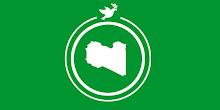 |
| An oil field near Pol-e-Dokhtar, Iran; credit: RT News |
by: Michael T. Winter
RT News
published: 01 February, 2012, 20:18
As tensions between the US and Iran heat up, author Michael T. Winter believes the main reason behind America’s harsh stance is Tehran’s move to seek an alternative to the dollar as an oil currency.
Economic sanctions, spearheaded by the US and, less willingly, the EU could have a disastrous effect on both of their respective economies. If Iran cannot sell their oil to Europe, there are plenty of customers waiting in the wings, and if they come bearing not petrodollars, but gold and sovereign currencies, then all the better for Iran. These sanctions, if enforced, will in effect place a serious dent in the power of the petrodollar.
...At the heart of the issue is not Iran’s dubious attempt to build nuclear weapons, or even oil, but how that oil is paid for. In 1973, Richard Nixon promised King Faisal of Saudi Arabia that the US would protect Saudi Arabian oilfields from any and all interested parties seeking to forcefully wrest them from the House of Saud. It’s important to remember that in 1973, Saudi Arabia didn’t have a fraction of the military and ground forces it possesses today (almost exclusively US manufactured weapons) and the USSR was very much a threat.
In return Saudi Arabia, and by extension OPEC, agreed to sell their oil in US dollars only. As if that weren’t sweet enough, as part of the deal, they were required to invest their profits in US treasuries, bonds and bills. The real zinger is that all countries purchasing oil from OPEC had to do so in US dollars, or ‘petrodollars’.
...2001, enter Saddam Hussein. He floated a plan to sell oil for European currencies in lieu of petrodollars. Shortly after Iraq was ‘suddenly’ found to be seeking and stockpiling weapons of mass destruction – allegations spearheaded by the US. The world knows what happened, suffice it to say that Saddam is dead and Iraq is ‘back on track’, selling its oil for petrodollars once again.
...Gaddafi made a fatal error when he decided to move away from the petrodollar in favor of other currencies. This simply was not tolerated by the US. Having already played the WMD card in Iraq, something new was pulled from the US ‘regime change’ grab bag. Within a year, ‘internal’ elements rose up in rebellion against Gaddafi and now he is dead. Long live the petrodollar.
Dominique Strauss-Kahn, former head of the International Monetary Fund (IMF), suggested last year that the Euro would be a more suitable oil reserve currency than the US Dollar. Within three months of that statement, allegations of rape ruined his career, derailing his bid for the French Presidency in the process. Soon thereafter, all charges were dropped, but of course, le dommage était fait – the damage was done. Christine Lagarde, DSK’s replacement as head of the IMF sees no reason to change the current arrangement, naturellement.
The Iran situation is a little trickier. The US has sought to dismantle Iran’s regime ever since the 1979 Iranian Revolution, so this round of hostilities, while not new, reflects a new level of intensity. Why, after thirty years of hostility, has the US ratcheted up its rhetoric? As Obama stated in his recent State of the Union address, when it comes to Iran and the insistence they dismantle their nuclear program, “no options are off the table”. By stating ‘no options’ this would include nuclear deployment as a deterrent.
The answer of course is that Iran is now seeking to disengage itself from the petrodollar dynamic. In 2005, Iran sought to create an Iranian Oil Exchange, thus bypassing the US controlled petrodollar. Fear that western powers would freeze accounts in European and London banks put an end to that plan.
The resulting sell-off of US dollars, T-bills, securities, bonds and assets will flood the already swollen world economy with even more useless dollars, ultimately devaluing it into a position where hyper-inflation becomes a risk.
So, while the US government sabre-rattles and prattles on and on about nuclear weapons and the threat Iran poses to the Middle East, the thin veneer of lies spouted by the elite controlled media is being stripped away, revealing the truth of their warmongering rhetoric.
...The US, by their foolish insistence on enforcing embargoes and sanctions against Iran, is hastening the end of the petrodollar and ushering in the age of US dollar hyper-inflation. A practical example: One loaf of bread in a healthy economy is $1.00. In an inflationary economy it’s $1.75. In a hyper-inflationary economy, $500.00.
Damocles wisely vacated the throne of Dionysius before the sword fell upon his head, but the US is foolishly refusing to step down from their economic dais in spite of the catastrophic effect current policy direction will mean for US citizens and the world economy.
Michael T. Winter
The statements, views and opinions expressed in this article are solely those of the author and do not necessarily represent those of RT.
(click here to read the full article by Michael Winter)
by William Clark
www.globalresearch.ca




















































































































No comments:
Post a Comment